Artists That Use Cross Hatching
Famous Examples of Crosshatching
Cantankerous hatching is a bones form of art, pencil sketch or by pen. Typically it is used as a framework upon which to build a painting but it has likewise been used as an fine art class in itself. In that location are many examples of the form that have survived, because the artist liked them enough to keep them in its original course, never intended to use information technology in a painting or as surviving blueprints for more than famous piece of work. Here is a list of ten of the most noteworthy examples of cross hatching.
1. Albrecht Dürer

The famous German Renaissance painter and engraver produced many examples of art through his life. At historic period 13, he used cantankerous hatching to proficient consequence in a self-portrait but information technology wouldn't be the finest example. He was already famous in his twenties and is considered the greatest Renaissance artist of Northern Europe. His most famous cantankerous hatching piece of work is of two easily pressed together in prayer. There is so much detail that Albrecht Dürer fifty-fifty went to the effort of intricately detailing the arteries. The cantankerous hatching method is most noticeable on the cuffs and the sleeves.
2. Rembrandt
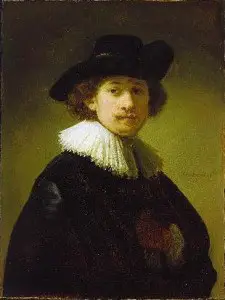
Rembrandt Harmenszoon van Rijn is famous for many paintings, portraits mostly though also a swell number of landscapes too. As a painter, naturally he would utilise hatching methods as a framework for his piece of work. His most famous self-portrait though remained in cantankerous hatching form and it used the method nearly entirely. He looks a little startled, is wearing a beret and his hair is unkempt. The whole piece has a 'crude' expect about it but is even so finely detailed and gives a good impression of the human.
3. Francisco Goya
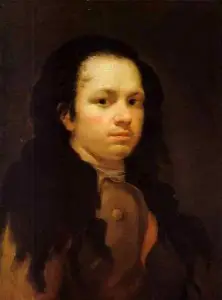
Goya is a famous Spanish artist, painter and printmaker who lived from 1745 to 1828. Many of his paintings have a certain 'cartoony' look about them. The nature of his piece of work (he painted mostly people) meant that he probably used cross hatching. One of his best examples comes from the Disparates set produced in 1877. It is of an elephant standing adjacent to a pond. The pond is surrounded by what looks like some rocks. A group of Heart Eastern looking men are on the left hand side and one is carrying a large particular, something like a stone slab
4. Edgar Degas
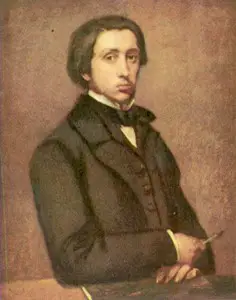
This famous French artist began to pigment early on in life and it was his paintings for which he was virtually famous, though later in life he developed a passion for the new craze of photography. Most of his works were portraits and people in situations. The best surviving example of cross hatching in his work is called 'ii dancers resting'. Information technology shows two ballerinas, fully dressed in their dancing attire. Ane is bending over and holding her left human foot while a second rests her caput on her hand, looking asleep!
five. Leonardo Da Vinci (1)
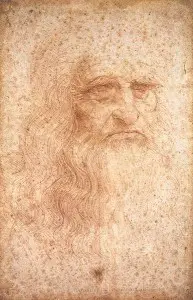
One of the most famous artists to always have lived, he painted the Sistine Chapel ceiling. A few years ago, a large number of his nigh famous sketches went on a tour, allowing the world to see some of his most amazing pencil work. A number of them used cross hatching to fine effect. One of the most impressive examples of intricate cross hatching is his 'Old Men' sketch. It is the clearest example in this listing and shows five elderly men. Ane is wearing what looks like a laurel wreath.
half-dozen. Leonardo Da Vinci (2)
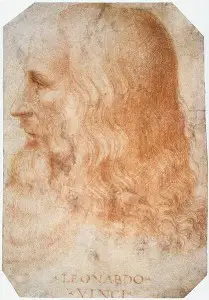
Leonardo's collection of sketches is so large that it is worth including two examples of his piece of work. He produced a number of self-portraits and the paradigm that we know best of the man, taken of him in old age, used the cantankerous hatching method. It shows merely his head, turning slightly to his left (our right). He has a full beard, the hair on the side of his caput is long merely he is bald on acme. He looks slightly glum with a frown and his mouth turned down
seven. Henry Moore
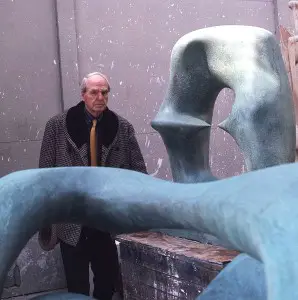
Though best known every bit a sculptor, Henry Moore also sketched from time to time. His cartoon work was almost entirely cantankerous hatching and many examples survive today and are mostly stylised human being figures. Examples include 'Two Women Winding Wool' and in this example you can certainly run across that they were designed to be templates for sculptures. Other examples include naked human figures. One is sat on a stool – i from the dorsum and one from the front, probably a female figure. There are a number of sitting figures within his work
8. Hendrink Goltzius
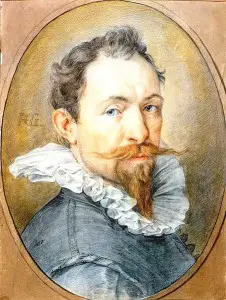
The famous Renaissance painter also used cantankerous hatching to good effect when constructing his paintings. Considered a leading Dutch engraver in the 16th and 17th centuries, his about famous cantankerous hatching work is a portrait of his right hand. Contorting his hand in order to show detail of his arteries, the cross hatching is used to adept effect on the wrist and the fingers too as the sleeve which is in the bottom left corner.
ix. Michaelangelo
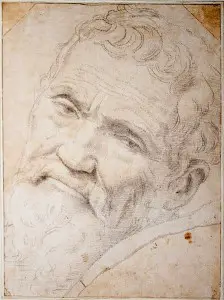
Famous for sculptures, paintings and a range of mediums it is said that no other private had such a large influence on western art. Some of the finest examples of contour cross hatching come from this famous Renaissance Chief. One of his finest examples is of a male figure from behind. He is muscular and cantankerous hatching is used to skillful effect downward his back, leg and buttocks. The hatching is fine and curved, adjusting to and creating the contours of the male person figure
10. Rodin
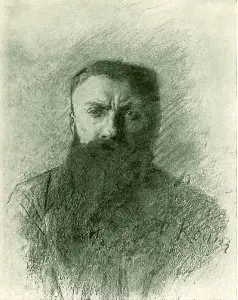
The sculptor most famous for 'The Kiss' was well-known for using cantankerous hatching in his preliminary sketches. This he did whether designing a template for a sculpture or a painting. Several examples exist just the best and nigh illustrative is the naked effigy of a man lying on the floor curled upward into a ball. His hands are over his caput, plain in a protective stance.
Conclusion
Art takes a lot of hard piece of work; a painter tin can rarely produce a painting without first laying downwards some foundations upon which to build and that is ordinarily a sketch using the cross hatching method. Though conventionally used equally a framework on which to build paintings, or equally a reference for sculpture, examples of cross hatching in art can be fine works of art in themselves. When used in fine item, they can be equally impressive as a fully completed painting.
Artists That Use Cross Hatching,
Source: https://infomory.com/famous/famous-examples-of-crosshatching/
Posted by: barnesprectephe76.blogspot.com


0 Response to "Artists That Use Cross Hatching"
Post a Comment